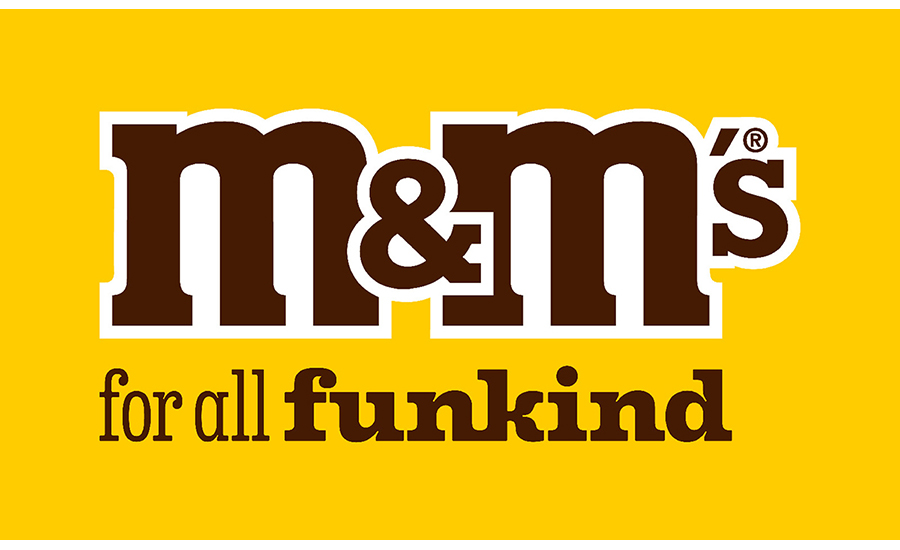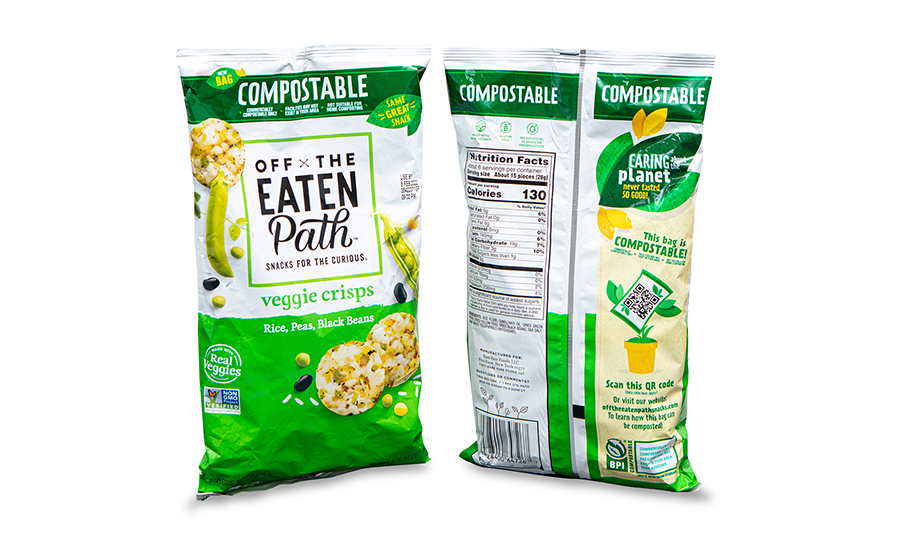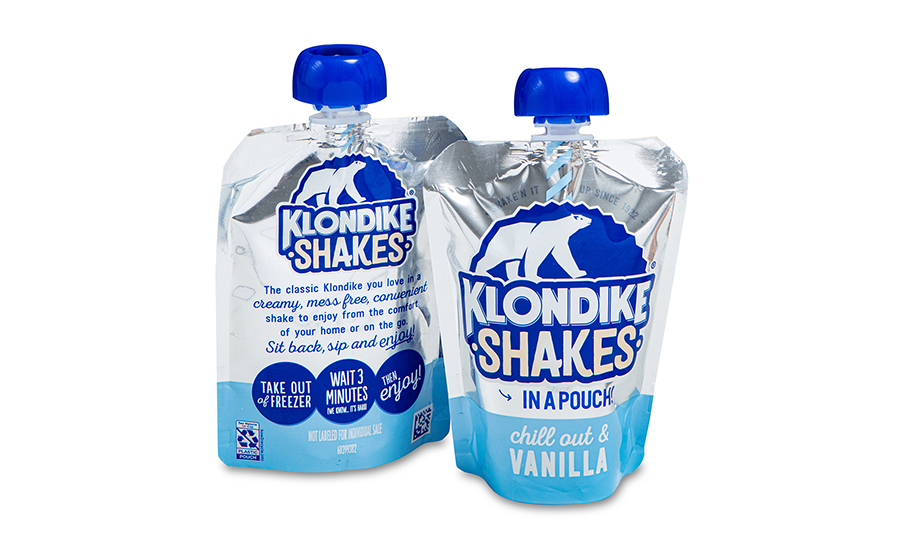
New-fashioned packaging
Recent packaging trends have us flashing back but also looking forward in new ways
It is not surprising that some of this year’s trends seem cut-and-pasted from previous years. However, forward progress is still in motion on solutions for sustainability and flexible packaging.
While flexible packaging and pouches are still growing in demand, glass bottles have taken a back seat in the last year due to supply chain issues. Store shelves reveal that today, bottles come in a couple sizes instead of a full range, or brands are slow to release new shipments. Still, the demand has increased and the North America Glass Packaging Market should see growth at a CAGR of 3.51% from 2021 to 2026, according to Mordor Intelligence. The largest growth will be in alcoholic beverages.
Paperboard continues to grow in demand, mostly due to e-commerce shipments. One area of concern is forestry—do we globally have enough trees planted to offset the increased use of paperboard. Paperboard, corrugated and fiber-based are all very sustainable and are used on a continual basis.
Aluminum, mostly used in food and beverage cans, is also on the upswing. Vantage Market Research shows that it will likely grow at a CAGR of 5.9% from 2022 to 2028. The highly recyclable costs of cans, consumer interest in and ease of recyclability, and in packaged food contribute to aluminum growth.
This year’s packaging awards from both Dow Packaging and Flexible Packaging Association show that new structures with increased sustainability, updated barrier films and more flexible plastic packaging took this year’s honors—proving that the need in sustainable structures is not slowing.
Dow Packaging, a division of Dow, annually holds its Packaging Innovation Awards contest. For more than 30 years, awards have honored packaging projects from around the world, showcasing the very best in sustainable innovation. Open to entrants across the value chain, the awards look for initiatives that excel in at least one criteria: technological advancement, responsible packaging and enhanced user experience.
A group of independent judges from seven countries and representing more than 300 years of combined industry experience evaluated 189 packaging projects. In addition to the Diamond Award winner, 35 other inspiring projects were recognized: nine Diamond finalist winners, 13 Gold awards and 13 Silver recipients.
Here is a sample of entries from the food and beverage categories:
Brookfarm: curbside recyclable, high-barrier stand-up pouch by O F Packaging, Diamond winner
O F Packaging created the pouch for Brookfarm’s muesli and granola that can also be recycled curbside. Flexible packaging is typically not easy to recognize by material recovery machines and hand picking such materials becomes difficult. After 12 months with their partners PREP Design and Results Group, the Diamond Award Winning Roll ’n’ Recycle packaging became a reality, allowing consumers to transform the empty, 100% polyethylene packaging into a 3D shape suitable for home recycling bins and enabling it to be recycled. The empty semi-rigid granola pouch is rolled into a cylinder by the consumer and the product label used as a sticker to keep the new shape of the packaging. Now, the rolled-up pouch can be dropped into the recycling bin ready for curbside pickup.

Danone: Laser-engraved recycled water bottle by VALGROUP & DANONE, Gold winner
VALGROUP & DANONE have removed the need for water bottle labels all together. The barcode is now engraved onto the bottle cap, and their laser decoration technology allows the details that would have previously been displayed on the label to be lasered right into the bottle, so there is now no chance of missing labels and an easier route into the recycling bin. The laser engraving also saves some grams of weight per bottle, which this adds up to environmental savings during the shipping process. It is the first of its kind on the Brazilian market.

SAMBAZON Açaí Bowl packaging by Fuseneo Inc., Gold winner
The goal of the package design was to use a new convenient form and help build awareness around issues of sustainability for the new frozen Açaí Bowl. Fuseneo designed this 100% compostable package with two-chambers to ensure freshness for the two distinct ingredients, granola and açaí. In addition, the bowl can be displayed standing up on a shelf as well as lying flat in a glass-top display freezer. Together with Fuseneo, SAMBAZON became the first company to launch a 100% plant-based packaging in the frozen dessert category.

Nescafé Protect Proslim, recyclable alu-foil free instant coffee stick by Huhtamaki Flexibles, Silver award
Nestlé Thai and Huhtamaki Flexibles created a new, more sustainable way for coffee. The Nescafé Protect Proslim was designed to replace the aluminum instant coffee sticks that are often used in planes, trains and hotel rooms. The mixed polyolefin structure replaces the existing foil-based laminate, making the packaging fully recyclable without compromising on product shelf-life. The packaging is easier to recycle due to use of only polyolefin based films and absence of aluminum foil, making it the optimal fit for the local recycling streams, meaning that a small recyclable stick pack of coffee can make a big difference to the environment.

The Flexible Packaging Association’s annual awards brought out the latest innovations in flexible packaging this year. Within the next section are a few examples of the Association’s winners.
Six packaging design trends
Top trends this year can be seen on various package designs from food and beverage to candy and cannabis. Here are just a few examples:
1. Inclusivity
Brands are moving toward a more-inclusive design on their products. M&M’s and Hershey’s are just a couple that have carried their corporate messaging to the candy package.
Hershey’s highlighted the “SHE” at the center of the milk chocolate bar as part of Women's History Month celebrations in March. The chocolate bar is the same but the graphics are a colorful representation of the company’s stance toward women. The new packaging also was an FPA Achievement Award winner.
M&M’s, part of Mars Inc., has recently announced not only a new look and feel but also a promise to bring people together through their refreshed brand strategy. The candy brand’s announcement is part of the evolved M&M’s brand strategy built on purpose, which aims to use the power of fun to include everyone, with a goal of increasing the sense of belonging for 10 million people around the world by 2025.

2. Sustainability
More and more brands are realizing that consumers are true to their word about wanting eco-friendly, compostable, bio-based packaging. Evanesce has various products pushing plant-based sustainability in packaging, including its Molded Starch Technology and Biopolymer products including straws, cups, trays and more. All are 100% plant-based and fully compostable in less than 90 days, the company states.
PMMI’s (The Association for Packaging and Processing Technologies) Vice President of Market Development Jorge Izquierdo says that sustainability is definitely important but the urgency isn’t quite as it was. “With CPGs it’s about growing and maintaining productivity with automation for workforce challenges” as the focus currently.
Off the Eaten Path is an FPA Achievement Award gold winner for sustainability and received a silver award for packaging excellence. Its new compostable bag has a fully certified industrial compostable biobased package, a proprietary sound dampening technology for rigid biobased materials, clear and concise “compostable” messaging, and a consumer interactive QR code providing details on composting options.

3. Interactive
From QR codes and radio-frequency identification (RFID) tags to smart labels and more in the “metaverse,” interactive packaging features allow you to up the game in telling your brand story or convey important messages to consumers while taking up minimal space, which is why we can expect to see more of them in the coming year.
PMMI’s Izquierdo says that, while interactive packaging helps with brand identity, it doesn’t offer much for the actual packaging. “QR codes allow consumers to connect easier with recipes, for example, which is lasting and not just a flashy interactive component on the package. It’s about engaging more with consumers.”
He expects that we will see interactive packaging make a comeback (held back due to the pandemic and the need for more urgency in packaging), as it is getting cheaper and more accessible.
In fact, Chipotle Mexican Grill announced it is testing RFID technology to enhance its traceability and inventory systems at its Chicago distribution center and about 200 restaurants in greater Chicago. The restaurant chain is one of the first to use RFID case labels to track ingredients from suppliers to restaurants via serialization. The company teamed up with RFID software provider Mojix, materials science and RFID innovator Avery Dennison, and RFID reader and encoder solutions provider Zebra Technologies.
Jones Soda Co., a craft soda known for its unconventional flavors and user-designed label artwork, has just released a new collection of augmented reality (AR) labels that turn into short action videos of daredevil athletes, edgy artists and other craft masters with a tap on a phone camera. The animated labels appear on 1.5 million bottles spanning five of the brand’s top-selling soda flavors, marking the brand’s third AR series since launching last July.
Activated with a proprietary Jones Soda app, the new label series spotlights influencers ranging from a professional slackliner and aerial rope-walking escapades to a freestyle biker, professional scooter rider, jump-roping pro skater and more. The collection also showcases a graffiti artist, music video director, landscape painter, champion women’s soccer goalkeeper, middle-school martial arts competitor, and others pushing the envelope in their respective fields.


4. Flexible packaging
Whether it’s for lighter weight for shipping, more sustainability or ease of use, pouches are still a top packaging material. Food processors and packagers talk about replacing plastics, but how are they measuring the sustainability?
Replacing traditional plastics with biodegradable or compostable materials/films, or paper films with a thin layer of plastic barrier film, are methods that provide a more environmental friendly structure, Izquierdo explains.
Bryce Corporation, in partnership with Popcornopolis, developed a stand-up box pouch that is one of a kind in the segment. The flat-bottomed design, consisting of multi-layer, high-barrier films, features HD flexographic printing, a press-to-close zipper, and sturdiness that maximizes presentation on each panel, and boosts shelf impact. The barrier film technology combined with a reseal feature provides maximum freshness. This would prove to be effective for e-commerce shipping too. The pouch won an FPA Achievement gold award for shelf impact.
What would you do for a Klondike… shake? Klondike Shakes in a spouted pouch won the FPA Achievement silver award for expanding the use of flexible packaging. Unilever created this mess-free frozen dairy product offering–the first in the U.S. It is ideal for enjoying at home or on the go: no straw, cup, or blender needed. Utilizing reverse printed graphics and a high-performance metalized lamination, this package achieves the familiar Klondike look and provides the required performance for a pouching format.

5. E-commerce
Direct-to-consumer (DTC) e-commerce is currently the best way for brands to build direct relationships with their customers. DTC refers to the practice of selling a product directly to the consumer via a company’s own web store, thus bypassing third-party retailers or wholesalers. For companies, building DTC e-commerce capabilities allows them to directly interact with end-consumers, which helps steer brand strategy and innovation based on real-time consumer insights.
PMMI’s Izquierdo says that flexible is growing in the e-commerce sector due to convenience and cost. As well, manufacturers are under pressure to lightweight and put as much sustainable materials into e-commerce packaging as possible—no matter if it is glass, aluminum, paperboard or plastics.
Shipping to customers has such an advantage: Control over the consumer unboxing experience. Without too much tertiary packaging (void fill), the experience can be similar to customers receiving a “gift.”
6. Gen Z attraction
The next demographic after millennials, brands are finding packaging designs that are attractive to this generation. Gen Z young adults are currently either getting a higher education or entering the workforce. According to Nielsen IQ research, Gen Z respondents have a clear tendency to be “face obsessed.” When purchasing food and beverage products, they pay more attention to the appearance of the packaging than the rest of the population. In the past year, Gen Z has been more likely to buy food and beverage products with better looking and strong design, according to FBIF (Food & Beverage Innovation Forum).
Secrecoffee is an example of a brand that appeals to Gen Z, and was a winner of the FBIF’s Marking Awards, a food and beverage packaging design contest in Shanghai. Modern Sky and Secrecoffee launched Strawberry coffee with a series of marketing campaigns during the festival, and their Fall-in-Strawberry café became one of the most critical sites for Gen Z to show their nature and display their own viewpoint of coffee, music and lifestyle.
The outer packaging box uses a simple design style to highlight the texture, while the internal product adopts a lively design. The opening and closing design presents two different feelings, offering consumers potential surprises in unpacking the box. The rose color scheme also reflects the distinctive strawberry-flavored coffee.

Packaging machinery trends
Flexibility for the new SKUs and personalization are top of mind for manufacturers when it comes to packaging machinery. “Before it was about the size of containers but now it’s the material type, such as biodegradable—machines are optimized for other materials and not new materials. New machines need to be flexible to handle these new materials,” says PMMI’s Izquierdo. He adds the idea is similar to corrugated boxes, when some machines initially couldn’t adjust and compensate for recycled boxes.
Izquierdo says the supply chain has forced manufacturers to substitute films they normally use, and work around new materials to make sure the value is there and the print still works. Purchasing new machines with future flexibility built-in could prevent production lags in the future.
A final area of growth and acceptance is big data and IIOT. There is now a willingness to share it with a 3rd party to help with predictive maintenance, which improves productivity and lessens scheduled maintenance. “We see the use of these technologies growing in the future,” Izquierdo concludes.

